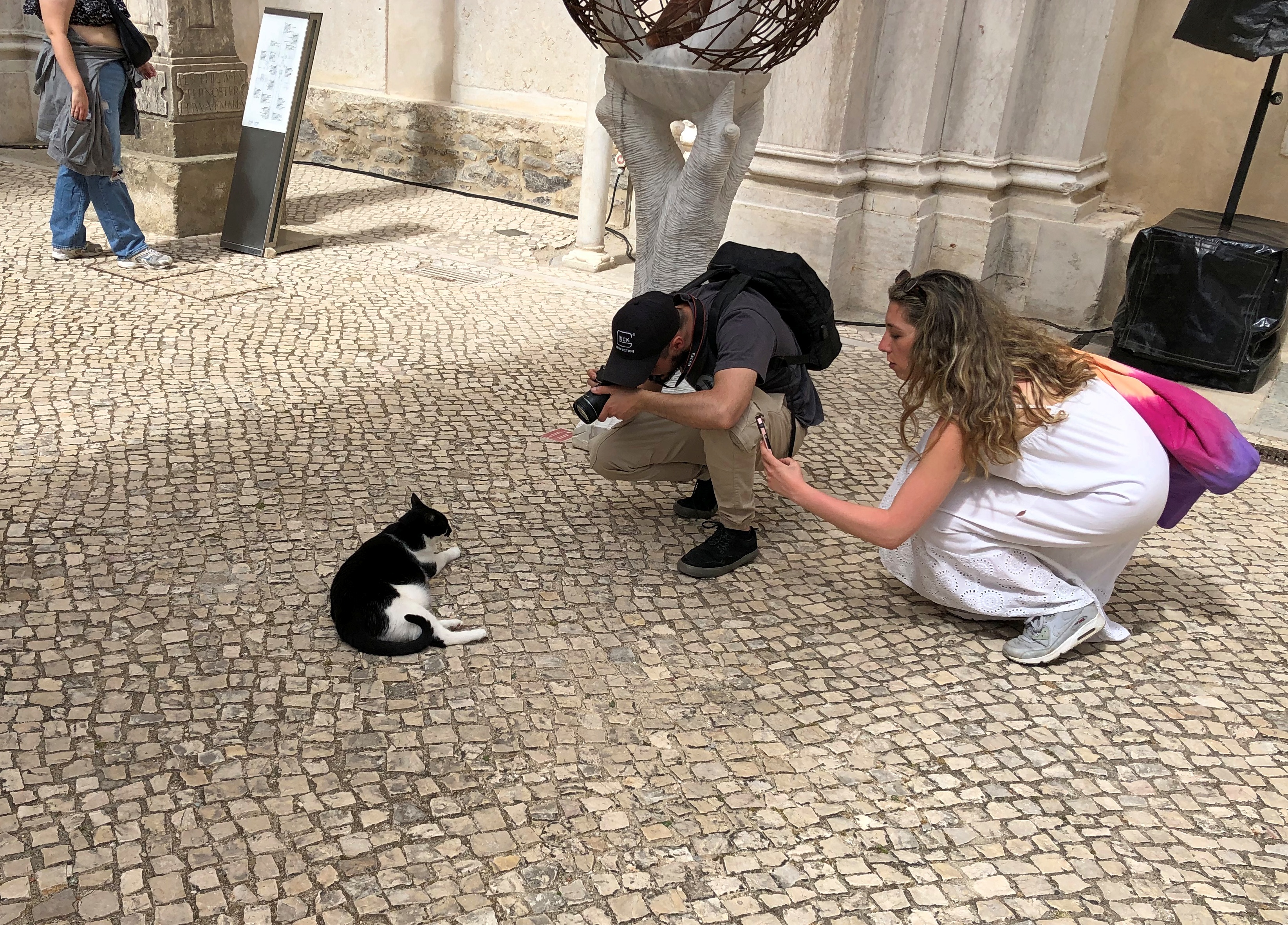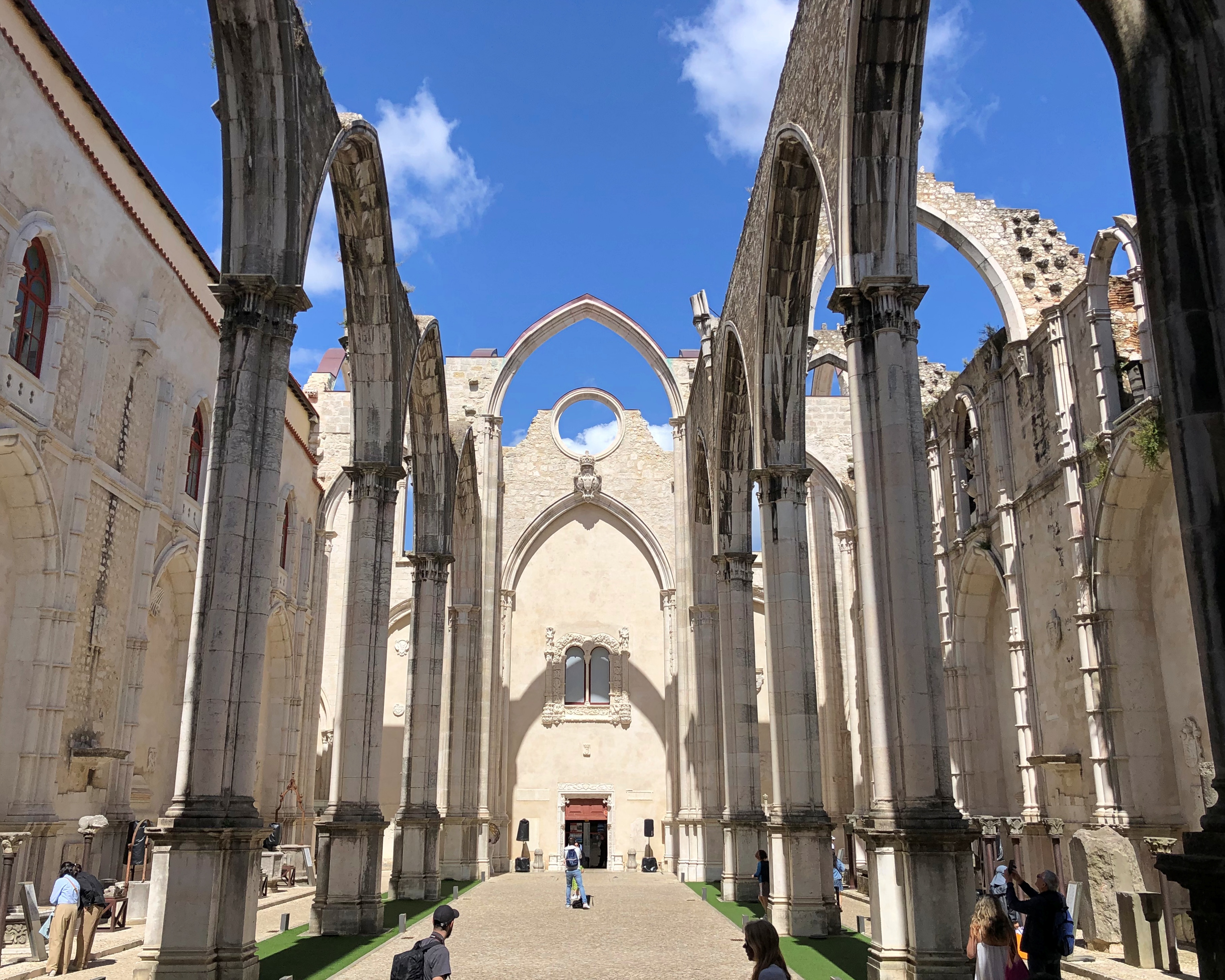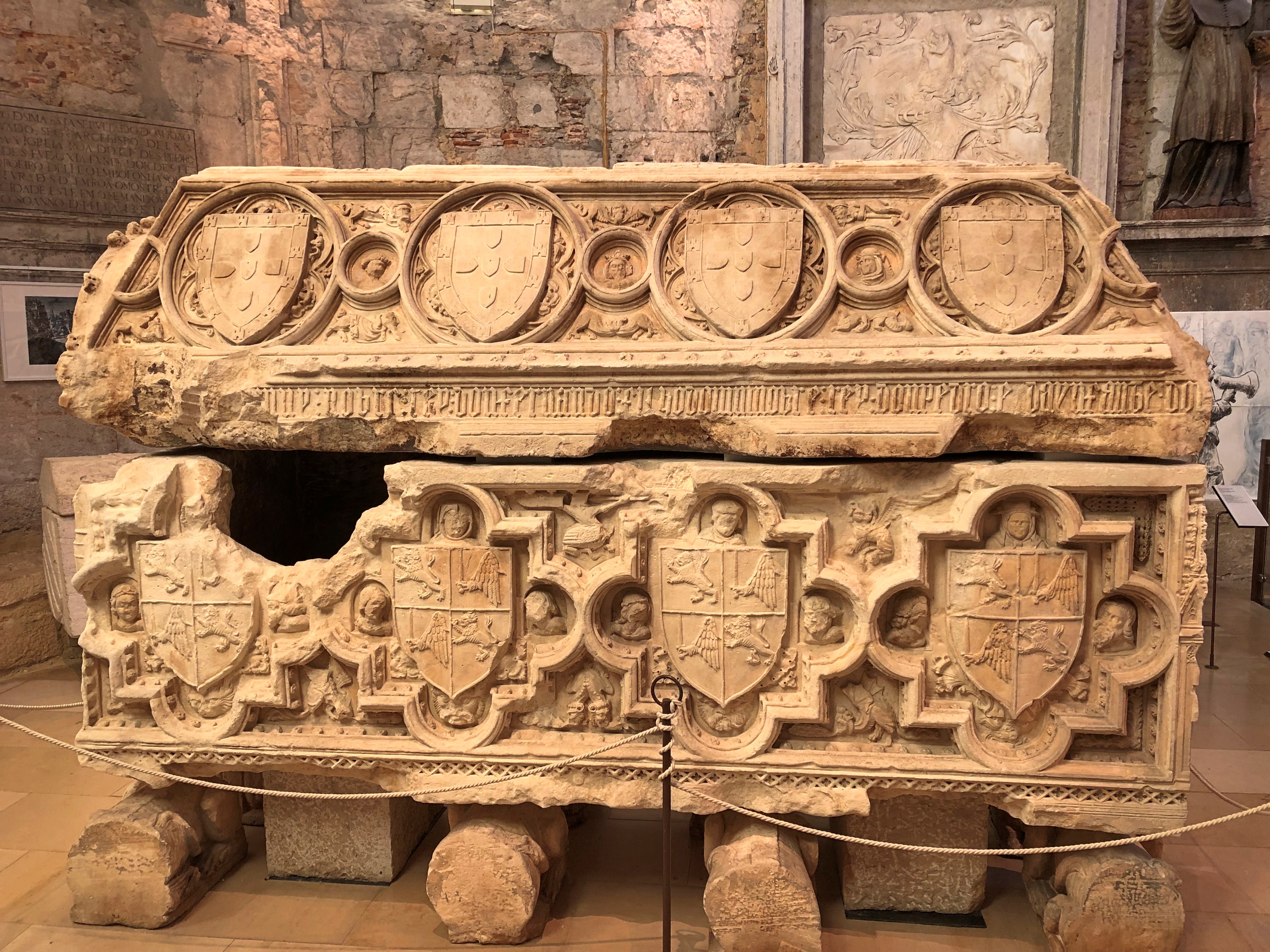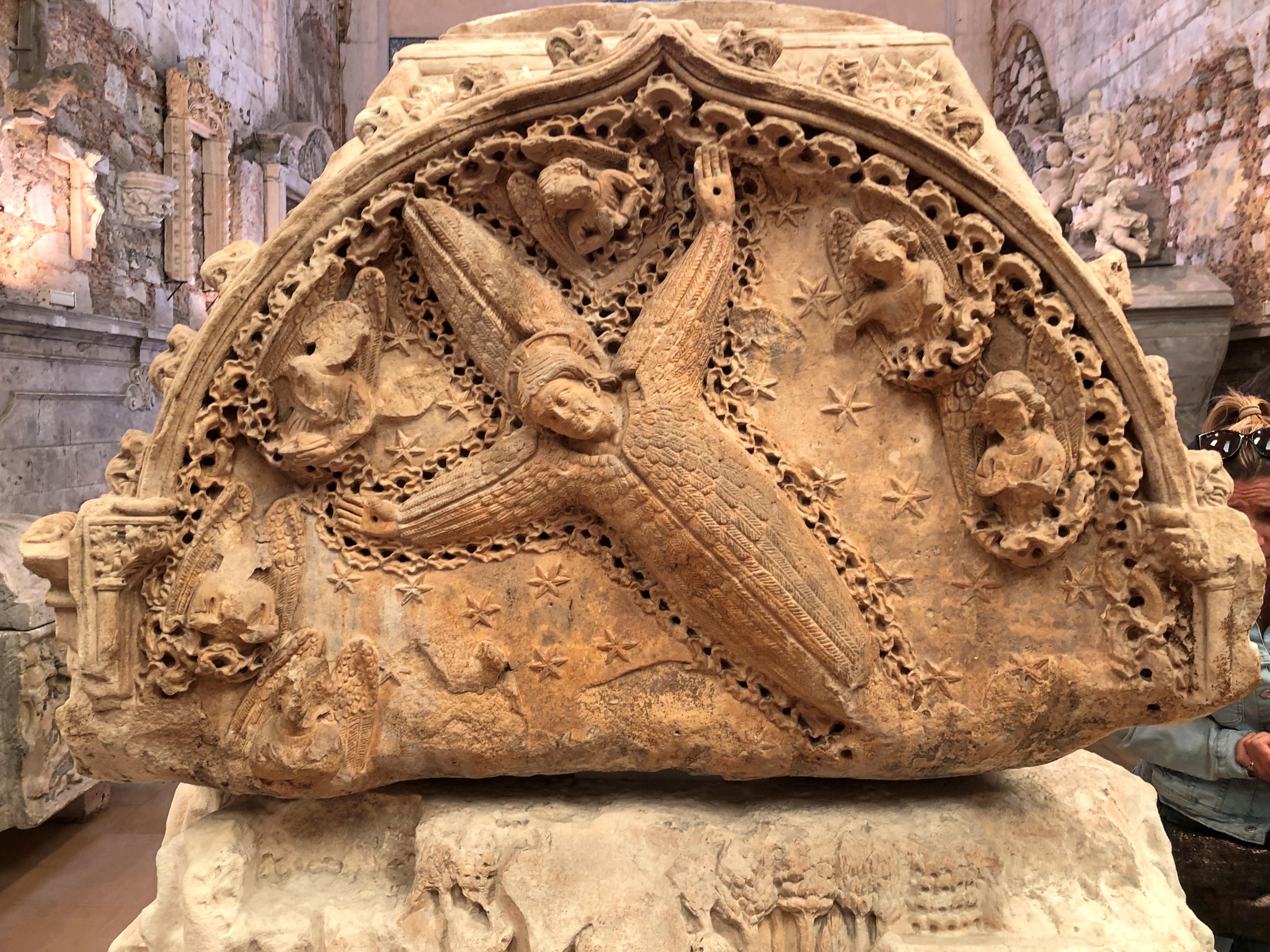The cat at Museu Arqueológico do Carmo in Lisbon wasn’t shy. This was his territory, after all. Tourists, such as ourselves, were just passing through.
A descendant of cats who did mousing duties at the Convent of Our Lady of Mount Carmel (Convento da Ordem do Carmo) centuries ago, including the sizable Gothic church associated with that long-gone convent? I like to think so, but in any case the cat seems to have the run of the place, a museum formed from the stabilized ruins of that church.

The green strips running the length of the nave-shell aren’t covered with grass. It’s something like Astroturf, if not that brand itself. For some reason, I found that amusing.
Surviving bits are on display under the roofless nave.

Including St. John Nepomucene, a sculpture by created in 1743, back when the 14th-century Czech martyr had recently become a saint (1729). Was getting a trending new saint a consideration for the Carmelites as they decided which saint statue to commission?
Looks like the sculpture survived the 1755 earthquake, which not only destroyed the church, it ended the site as a monastic community. The museum dates from the 19th century, through the efforts of the Association of Portuguese Archaeologists. But history wasn’t done with the site, museum or not: the former convent was a brief focus of activity during the Carnation Revolution.
The roof remains, or was restored to, the transept and the sanctuary, which now house other artifacts.
Such as a number of elaborate tombs original to the church, or relocated from other places where they were being neglected. This is the 14th-century tomb of King Ferdinand I (d. 1383). Apparently his remains got lost along the way, or at least are not in the tomb any more.

Or more likely, former tombs, now exhibits illustrating status, even in death. As if we needed even more reminders of impermanence in the ruins of an enormous church.

